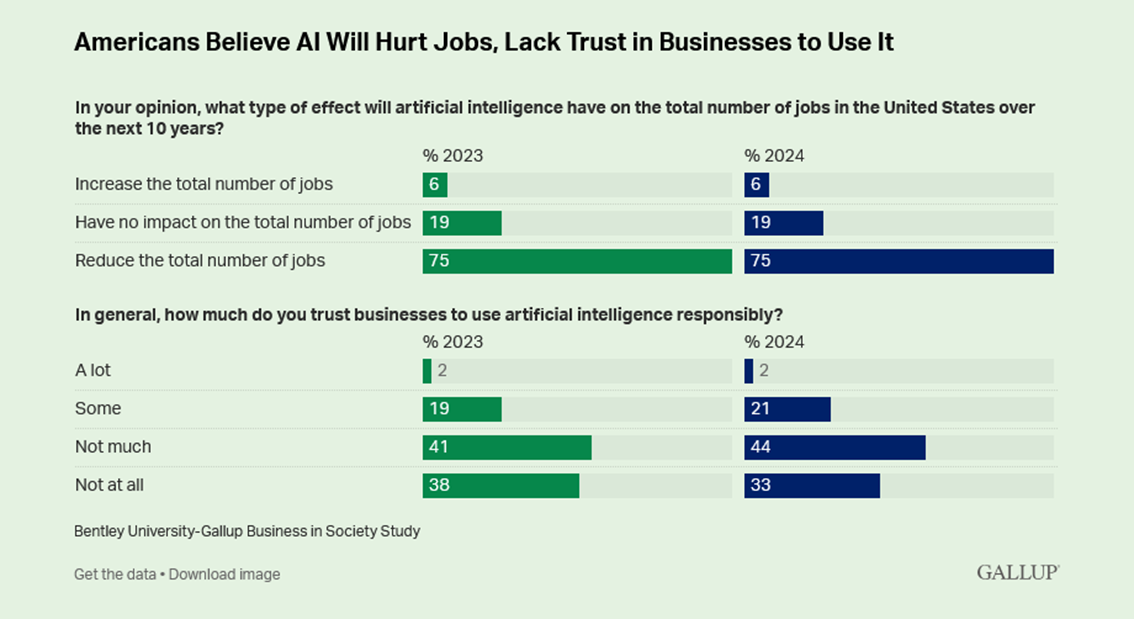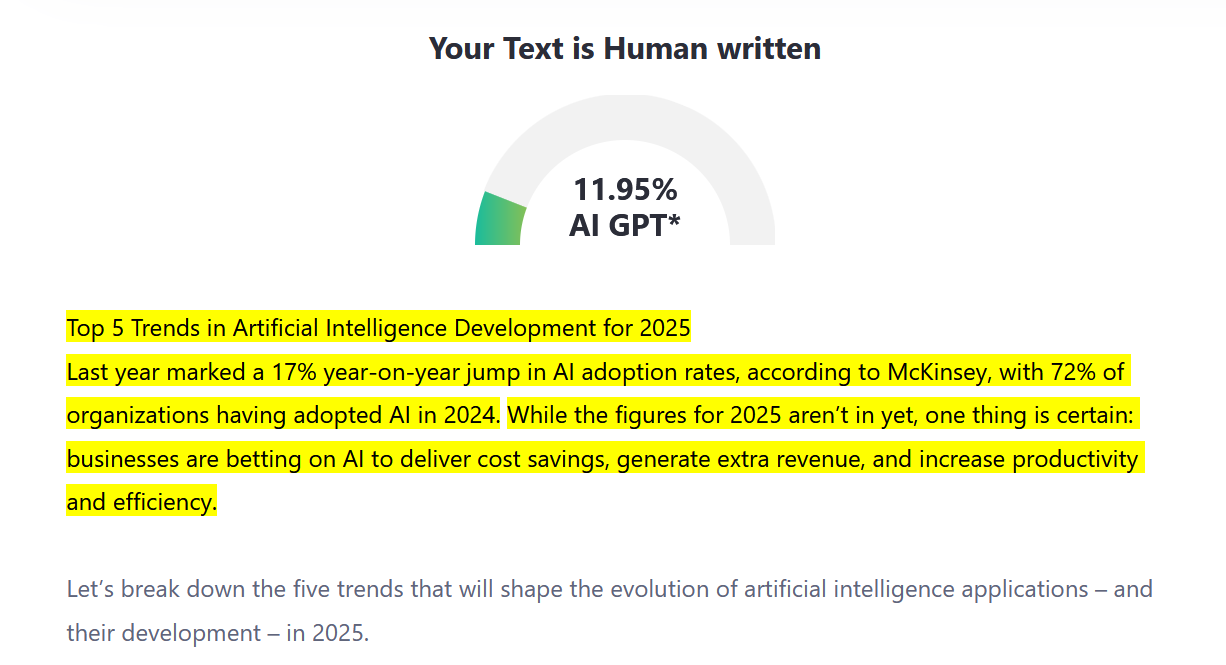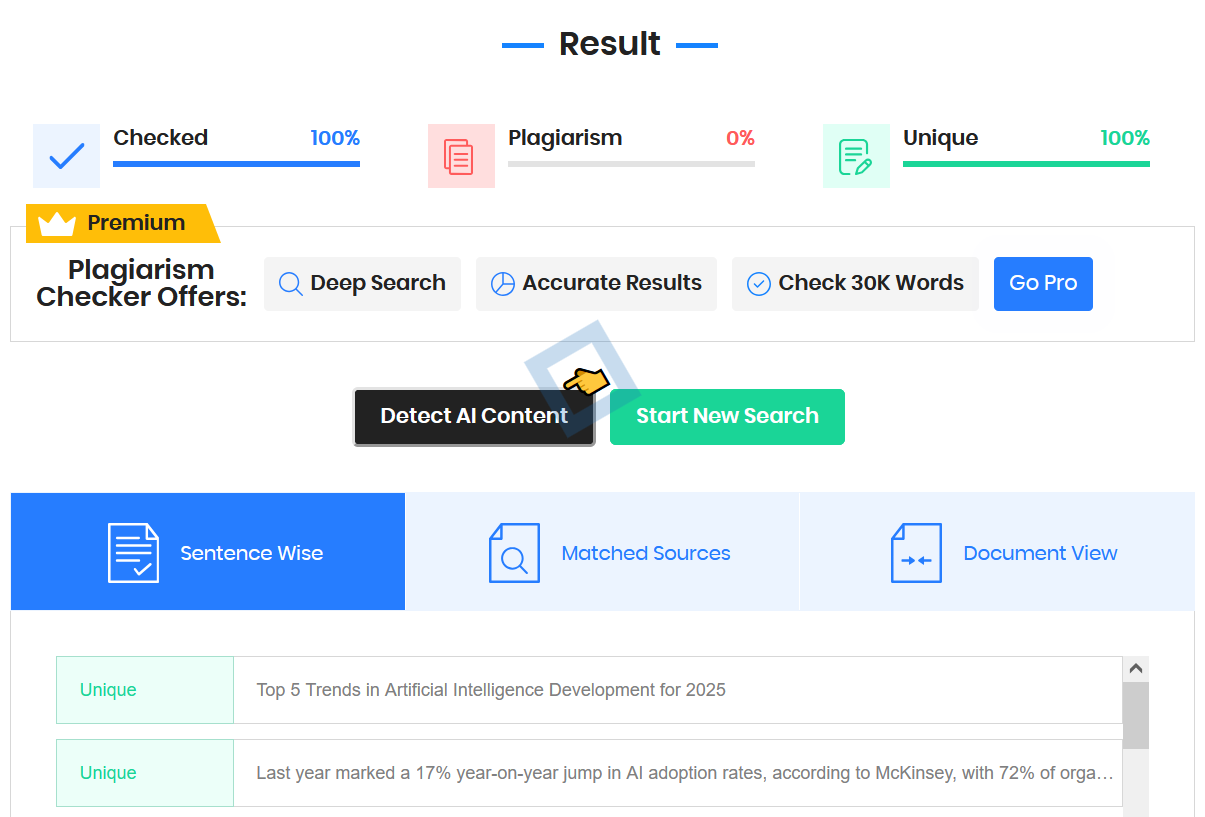Description: Explore the top five AI development trends that will shape the technology in 2025, from agentic AI to sustainable development and responsible AI.
Top 5 Trends in Artificial Intelligence Development for 2025
Last year marked a 17% YoY jump in AI adoption rates, according to McKinsey, with 72% of organizations having adopted AI in 2024. While the figures for 2025 aren’t in yet, one thing is certain: businesses are betting on AI to deliver cost savings, generate extra revenue, and increase productivity and efficiency.
Let’s break down the five trends that will shape the evolution of artificial intelligence applications – and their development – in 2025.
Agentic AI Is the New Buzzword
What if AI could complete tasks independently, without the user writing prompt after prompt? Autonomous AI agents are meant to do exactly that – and Gartner named agentic AI the number one tech trend for 2025.
These agents can operate without much user intervention. Instead of following step-by-step instructions, users simply state the goals the system should achieve, and the agentic AI will take the most appropriate action.
While agentic AI has the potential to significantly augment worker productivity, establishing proper guardrails will remain a challenge in implementing it. These guardrails should ensure the AI model’s actions align with the intentions of both users and system providers.
Consumers Call for Responsible AI
According to a recent Gallup survey, most U.S. consumers (79%) don’t trust businesses to use AI responsibly much or at all. The same poll, however, offers a clear path toward building trust with the users: transparency about AI use in business practice is the number one way to alleviate consumers’ concerns.

This poll illustrates a wider trend already prominent in 2024: the call for responsible AI. This framework for AI development and adoption emphasizes the model’s explainability, fairness, transparency, and privacy.
Besides the consumer expectations toward responsible AI adoption, regulators are putting some of the responsible AI guidelines into law.
Last year saw a boom in AI discussions among legislators and the passing of the AI Act in the European Union. State regulators in the United States examine AI use in already highly regulated industries, such as health insurance and finance.
Sustainable AI Development Is Emerging
AI models require immense computing power for training and functioning, and their booming electricity consumption is drawing attention.
According to MIT Technology Review, generating one image with AI consumes as much energy as charging a smartphone to 100%. The International Energy Agency expects electricity consumption from data centers, AI, blockchain, and cryptocurrency to double the 2022 levels by 2026.
This attention is why major AI vendors advance the idea of green AI. It revolves around using renewable energy in data centers and minimizing the amount of water required for cooling.
For example, Microsoft recently declared that it aims to become carbon-negative by 2030. Amazon, Google, and Microsoft are also looking into nuclear power to meet their growing energy needs.
AI-Enhanced Development Tools Are Here
AI can halve the time developers spend on generic programming tasks, and generative AI models are the driving force behind this application of the technology. Cursor, GitHub Copilot, Amazon Q Developer, and Tabnine are just some examples of AI-enhanced coding tools already in the market.
In 2025, these tools will continue streamlining development by:
- Generating whole code snippets
- Automating testing and error diagnosis
- Detecting security flaws and potential vulnerabilities
- Suggesting code improvements based on project-specific requirements
- Streamlining regular code reviews
Edge AI Is at the Peak of Expectations
The combination of AI and edge computing can be the answer to the mounting concerns regarding the technology’s sustainability and privacy. Instead of sending data to cloud servers for processing, edge AI solutions store data and run analytics on local devices.
This approach allows for real-time data processing and analytics thanks to reduced latency. However, edge devices lack computing power compared to servers: you trade processing capacity for reduced latency.
In Conclusion
Much like in 2024 and 2023, AI – and the expectations towards it – will continue fluctuating at a rapid pace this year. So, keep a close eye on the trends listed above, as well as:
- AI use in cybersecurity and cyberattacks
- Emerging AI regulations
- AI’s role in scientific breakthroughs
Ready to capitalize on one or several of these AI trends? Contact S-PRO, an AI development partner with 10+ years of experience in AI/ML, data analytics, and blockchain projects across finance, energy, healthcare, manufacturing, and more.









